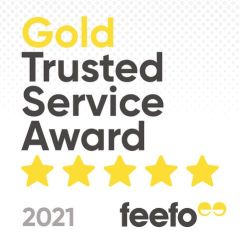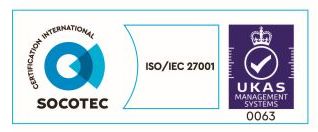We loved speaking with Elliott King on the latest episode of 20 Minute Marketing. Elliott is the CEO at MintTwist, which is an award-winning digital agency in London. He also hosts a digital marketing podcast himself, named WATCHTIME, which you can find on streaming platforms.
During the episode, Elliott shares insights on the user buying journey. We talk about the three different levels of the funnel, starting at the top and then discussing the middle and bottom too. Each level has unique opportunities that allow you to connect with prospective customers.
Elliott also shared his experience of working in Silicon Valley. Moving there during the dotcom boom, he witnessed the rise of many e-commerce stores that ultimately went on to fail due to marketing issues.
The full episode is available by listening to 20 Minute Marketing on Apple Music, Spotify, Google Podcasts, and more. You can also listen on our site by visiting The Reach Podcast page. If reading is your thing, then here is a recap of our conversation:

I listened to one of your podcast episodes before we got started today. And I learned that you moved to Silicon Valley during the start of the tech boom. So, I would love to know more about that experience for you?
So, the story is an interesting one. For context, I am 44 years old, which means I was born in the 70s, and I was a child of the 80s. I was one of these children who grew up with a very early stage home computer, and in those days, there were very few games. Lots of children in the 80s were quite highly motivated to learn the basics of programming so that we could play games. So that was my first taste, and then I went to university and studied programming there. When I came out of university, in the mid-90s, there was a significant shortage of computer programmers. I mean, we think there is a shortage now, but back then, there were barely any. Therefore I was quickly able to get quite good jobs.

Alongside computers, my other passion was travelling, and with that, I had the opportunity to go out and work in Silicon Valley. I went in 1999, which was right in the middle of the dotcom boom. Websites and e-commerce websites were getting built for the first time. Amazon was an up and coming company. Google was an eight-person company. I worked there alongside thousands of programmers from all over the world who were working for these startup companies.

However, in the year 2000, it was the dotcom bust. These companies were funded on the premise that they were going to start to turn a profit but they didn't. In Silicon Valley, people were relatively tech-savvy, but the broader consumers just weren't ready to put their credit cards into a website at that time. As a result, customers didn't arrive at these websites, and the whole industry went bust, most of them never survived. Amazon and a handful of others saw through that recession that followed and went on to become huge companies. What I took away from that experience was that you could build the most amazing website, but if no one knows about it then it's not going to make you any money.


I'm interested to hear your thoughts and how businesses can approach multi-channel, particularly smaller businesses, or in house marketers that might not have the same access to resources that a full-scale agency or multinational company might have?
Yeah, so whether you're a small business or a global brand, I think marketing is about knowing your customers and your target customer groups. Most marketers will have a good idea about what this looks like. But you can also sketch it out to create the user journey. So, first of all, what is a good fit between you and your customers? Can you describe that customer? And that becomes the persona.

So, right at the top of the funnel, we have suspects, which are people that would be a good fit. However, you don't know each other yet. So, you've got to create awareness at the top of the funnel. This is where things like social media advertising can be effective as you don't need to know your customers, you just need to know where to find them. Once you have the right demographics then you can turn a suspect into a prospect, which means they are aware of your offer.


Yeah, that makes a lot of sense, and you covered the top of the funnel well. So moving down that funnel to the middle of it, for example, what can marketers do during that phase of the consumer buying journey?
So in the middle of the funnel, customers might be aware of us. They might have been on our website, and they might have had a look at our product or service. When purchasing any significance, most customers are unlikely to buy at their first visits. So, they need several touchpoints. If a potential customer has been on our website, we want to motivate them to come back to the site to do some more research. One of the ways that we can do that is through remarketing. If we can also capture phrases via SEO, organic search, and even paid search, then we're bringing visitors to our site that are both relevant and almost ready to buy. So, search and remarketing are just two key tactics that work in the middle of the funnel.


We covered the middle funnel in detail a few weeks ago on episode 42 when I spoke with Claire Jarrett about how you can follow your prospects around the web. Once you have a remarketing strategy set up, then can be as cheap as a few pennies for each click, which is much cheaper than the top of the funnel costs. I'm guessing that the next step is to then target existing customers at the bottom of the funnel with offers and reasons to make repeat purchases?
The interesting thing about the bottom-funnel is that it's industry-specific. If you focus on repeat purchases, then it's about getting customers to buy more from you. Some companies, like holiday destinations, might not have the same customers coming back every year. However, they might want to motivate customers to leave a positive review as it will increase the likelihood of new prospective customers from engaging with the reviews and potentially converting. So, the bottom of the funnel depends very much on your strategy and what type of business you are.


So you have mentioned all three levels of the customer buying funnel now. What are some of the things that tie them together? And how can businesses get started and achieve success in all three phases?
I think this is where data and analytics come in. The aim is to have the correct data and use the right analytical tools. If they are all aligned then we can pull this data into Google Data Studio and have a live dashboard that shows the marketing team what's going on during each stage in the funnel. They can then identify if one part of the funnel needs adjusting.


Hi, I'm Liam, Marketing Executive at Reach Interactive. I have a background in international marketing and love branding, social media and seeing how companies communicate with their customers.
TAKING CARE OF MILLIONS OF MESSAGES EVERY SINGLE DAY - TRY US FREE
Use our calculator to work out your price (£) per credit below:
(1 Credit = 1 × 160 character text message).

PARTNER : MIND




©2002-2025 All rights Reserved. Reach Interactive© is a registered trademark of Reach-Data Ltd is registered in the UK and Wales. Registration Number: 04602161. Privacy Policy Terms and Conditions